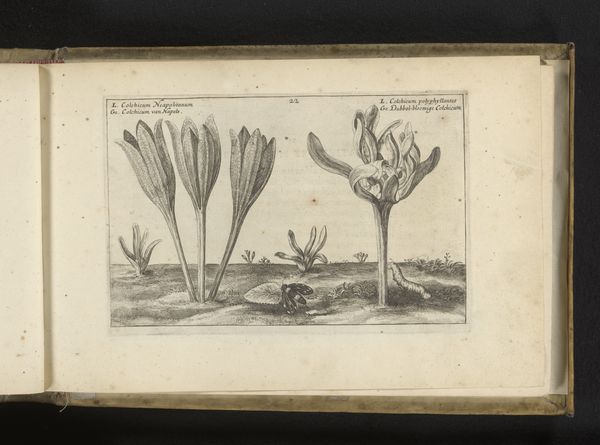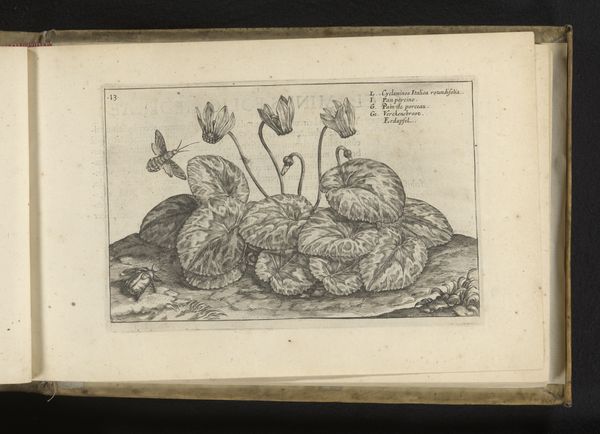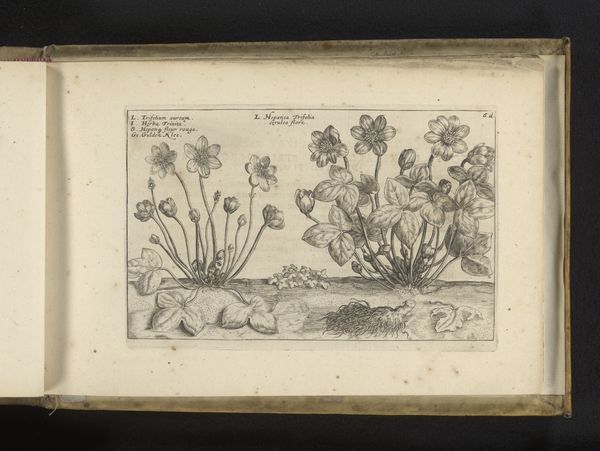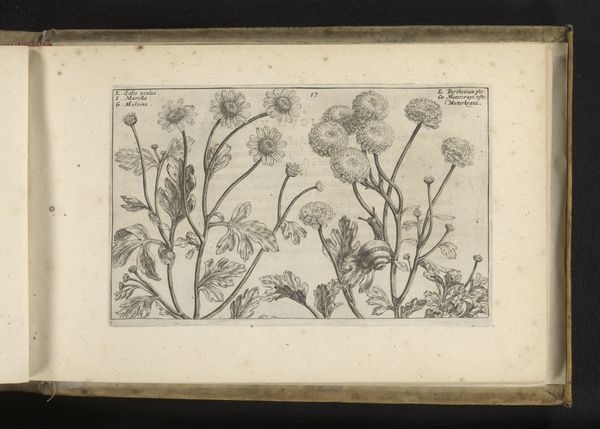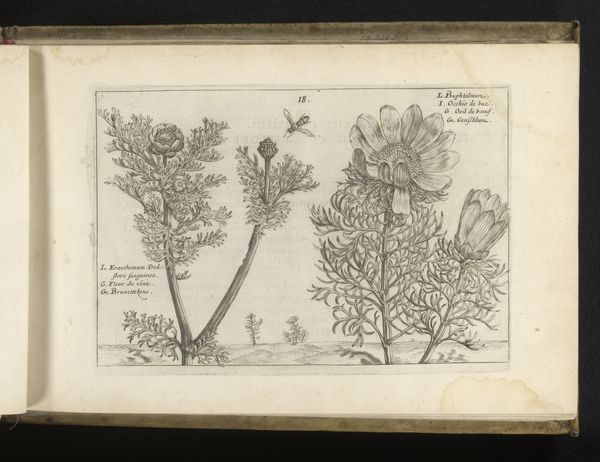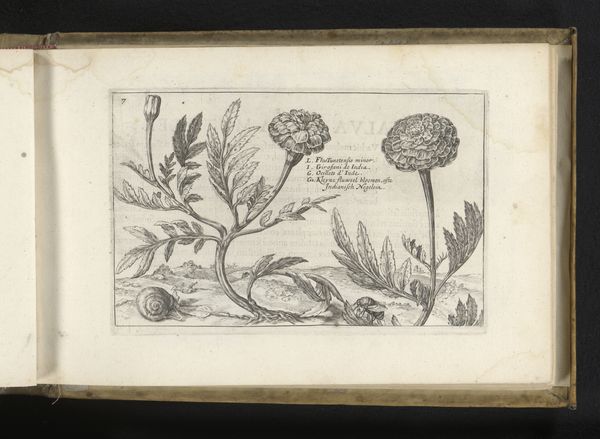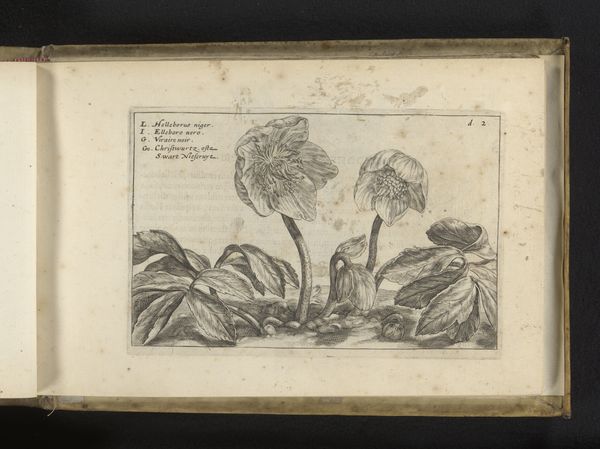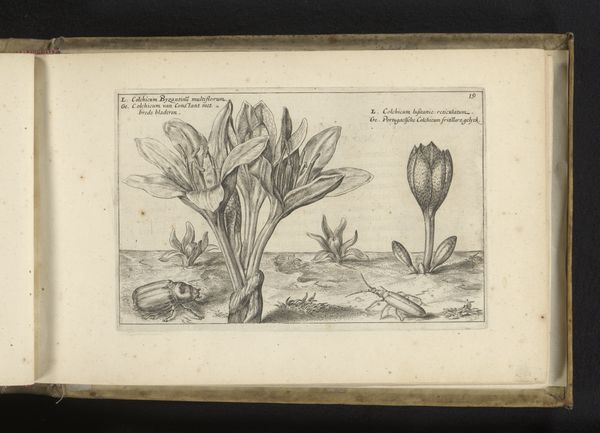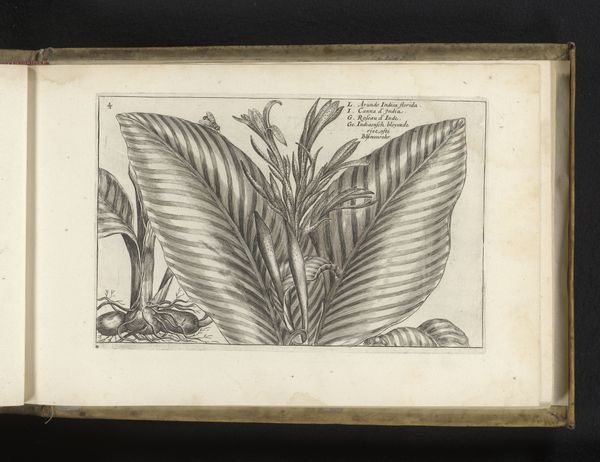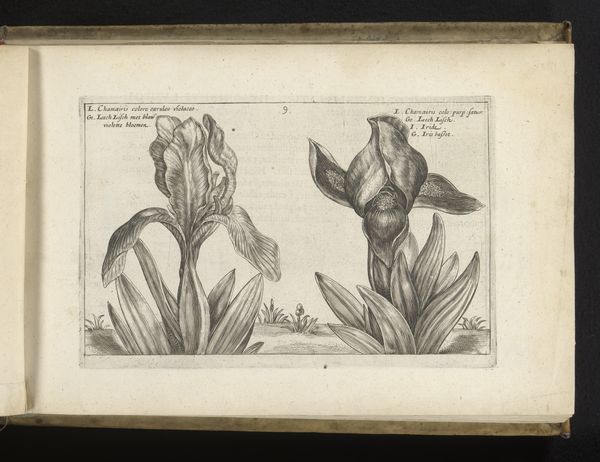
#
aged paper
#
homemade paper
#
ink paper printed
#
sketch book
#
flower
#
personal sketchbook
#
pen and pencil
#
pen work
#
sketchbook drawing
#
storyboard and sketchbook work
#
sketchbook art
Dimensions: height 136 mm, width 206 mm
Copyright: Rijks Museum: Open Domain
This print of a Cyclaam was made by Crispijn van de Passe the Younger, in the 17th century. The image is a copper engraving, a technique that requires the artist to incise lines directly into a copper plate, using a tool called a burin. Look closely, and you'll notice the extraordinary level of detail achieved. This wasn't just about artistic skill; it was a labor-intensive process. Each line had to be carefully cut, and the plate then inked and printed. This demanded precision and time. Copperplate engraving was not only a means of artistic expression, but a reproductive technology that helped to disseminate botanical knowledge. The Cyclaam, with its delicate leaves and flowers, would have been a subject of great interest at the time. The print reflects a growing appreciation for the natural world and a desire to document and classify it. It is a marriage of science and art, and a reminder of the skilled hands that brought it into being. It bridges the gap between craft and fine art, reminding us that both require technical know-how, and hard work.
Comments
No comments
Be the first to comment and join the conversation on the ultimate creative platform.
